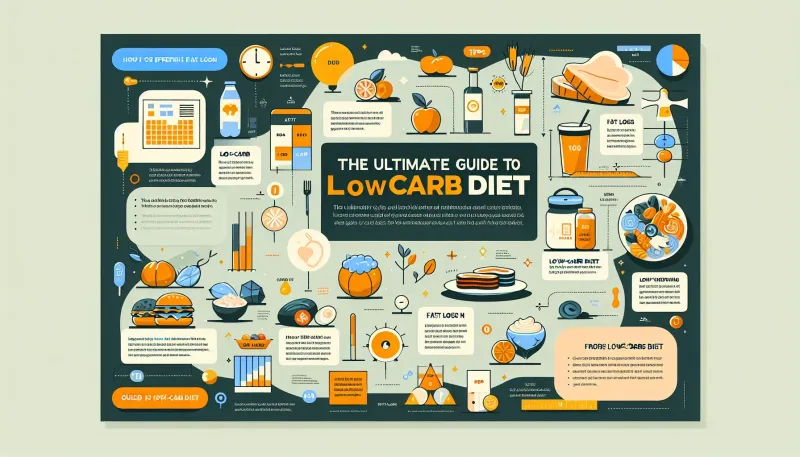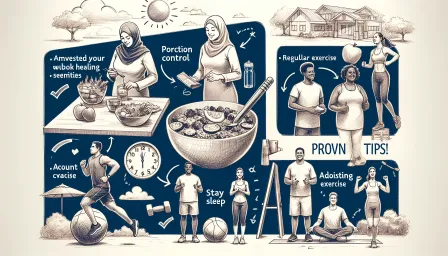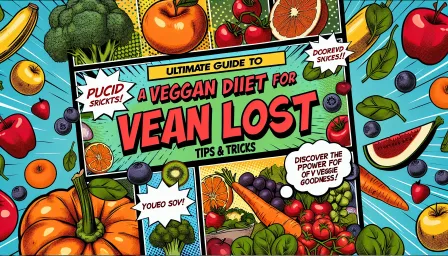The Ultimate Guide to a Low-Carb Diet for Fat Loss: Tips and Tricks

Discover tried-and-true methods for utilizing a low-carb diet for fat loss. This comprehensive guide provides expert tips and tricks to help you achieve your fitness goals.
Adopting a low-carb diet for fat loss is a popular and effective strategy for many people looking to shed extra pounds and improve their health. This comprehensive guide aims to provide you with well-researched tips, tricks, and information to help you navigate your low-carb journey with ease.
Understanding a Low-Carb Diet
What is a Low-Carb Diet?
A low-carb diet reduces the consumption of carbohydrates, commonly found in sugary foods, pasta, and bread. Instead, it emphasizes proteins, healthy fats, and vegetables. By limiting carbohydrate intake, the body is encouraged to burn fat for energy, which can lead to weight loss.
How Does it Promote Fat Loss?
When you consume fewer carbs, your insulin levels decrease. This reduction in insulin triggers the body to use stored fat for energy, promoting fat loss. Furthermore, a low-carb diet can help curb hunger and reduce calorie intake, contributing to weight loss.
Benefits of a Low-Carb Diet for Fat Loss
Several studies have demonstrated the benefits of a low-carb diet for fat loss and overall health. Here are some key advantages:
- Rapid Weight Loss: By minimizing carb intake, you can experience quick initial weight loss, primarily due to water weight loss.
- Improved Blood Sugar Levels: Low-carb diets are beneficial for managing blood sugar levels and can help prevent or manage type 2 diabetes.
- Increased Satiety: Foods higher in protein and fat can make you feel fuller for longer, reducing overall appetite and caloric intake.
- Enhanced Metabolic Health: Low-carb diets can improve various markers of metabolic syndrome, including cholesterol levels and blood pressure.
Getting Started with a Low-Carb Diet
Choose the Right Plan
There are various types of low-carb diets, such as the ketogenic diet, Atkins diet, and low-carb high-fat (LCHF) diet. Each has different carb restriction levels and guidelines. Research these options and choose one that aligns with your lifestyle and goals.
Plan Your Meals
Planning is crucial for staying on track with a low-carb diet. Create meal plans that incorporate a variety of low-carb foods to avoid monotony and ensure you receive essential nutrients. Focus on whole, unprocessed foods, including:
- Protein Sources: Meat, fish, eggs, and dairy.
- Healthy Fats: Avocados, nuts, seeds, and olive oil.
- Low-Carb Vegetables: Leafy greens, broccoli, cauliflower, and peppers.
Tips for Success
Monitor Your Carbs
Keeping track of your carbohydrate intake is essential for a low-carb diet. Use apps or food diaries to log your meals and ensure you stay within your carb limit.
Stay Hydrated
Drinking plenty of water is important on a low-carb diet. It helps to keep you hydrated, supports metabolism, and can reduce the chances of experiencing the "keto flu" — a common set of symptoms that may occur when starting a low-carb diet.
Avoid Processed Foods
Processed foods, even those labeled 'low-carb,' can still contain hidden sugars and unhealthy fats. Stick to whole, natural foods to reap the maximum benefits of your diet.
Common Challenges and How to Overcome Them
Dealing with Cravings
Cravings for high-carb foods can be a challenge, especially in the beginning. Combat these by eating enough protein and fat, keeping low-carb snacks handy, and staying hydrated. Sometimes, cravings can be a sign of dehydration or nutrient deficiency.
Managing Social Situations
Eating out or attending social events can be tricky on a low-carb diet. Research restaurant menus beforehand, opt for dishes with protein and vegetables, and don't be afraid to ask for modifications. Bring a low-carb dish to share at gatherings to ensure you have something to eat.
Plateaus
Weight loss plateaus can occur even on a low-carb diet. If this happens, reassess your carb intake, calories, and activity level. Sometimes, small adjustments, like reducing carbs further or increasing physical activity, can help break the plateau.
Long-Term Maintenance
Making it Sustainable
For many, maintaining a low-carb diet long-term is essential to continue enjoying its benefits. Focus on making it a sustainable lifestyle rather than a temporary diet. Incorporate a variety of foods to prevent boredom and nutritional deficiencies.
Balance and Moderation
While a strict low-carb diet can be effective for initial weight loss, consider gradually incorporating healthy carbs, like whole grains and fruits, once you've reached your goals. This can make the diet more balanced and easier to maintain in the long run.
Conclusion
A low-carb diet for fat loss can be a powerful tool when implemented correctly. By understanding the principles, benefits, and challenges associated with low-carb eating, you can set yourself up for success. Remember to choose the right plan, prepare nutritious meals, and stay vigilant about your carb intake. With dedication and the tips provided in this guide, you'll be well on your way to achieving your fat loss goals and maintaining a healthy lifestyle.



























